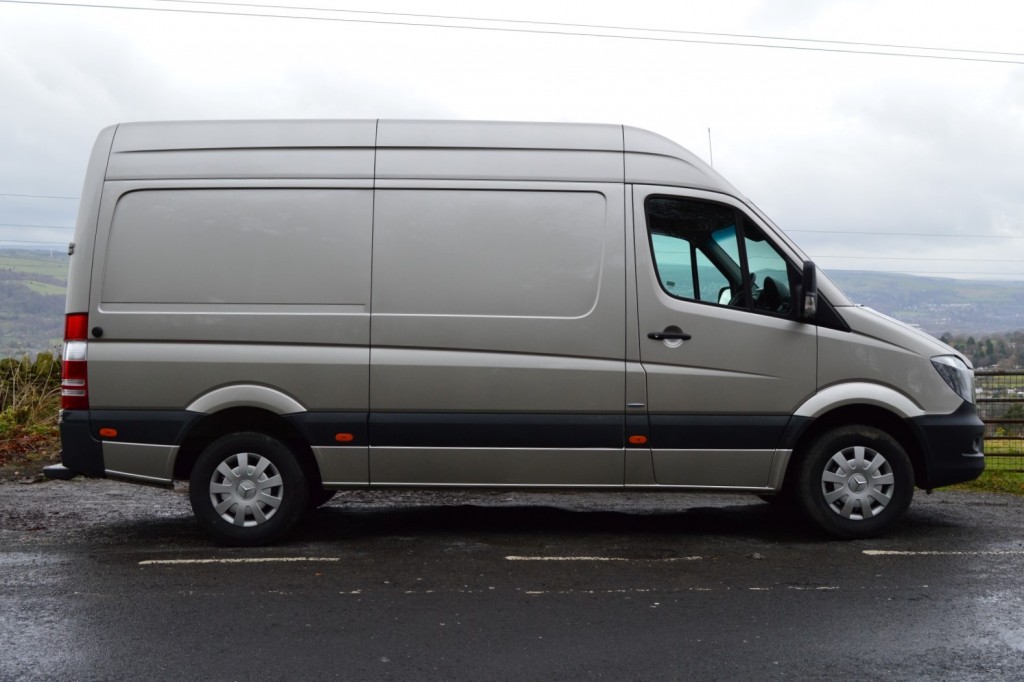Road Test and Review – Mercedes-Benz Sprinter 314 CDI MWB High Roof
The white van man comes of age…
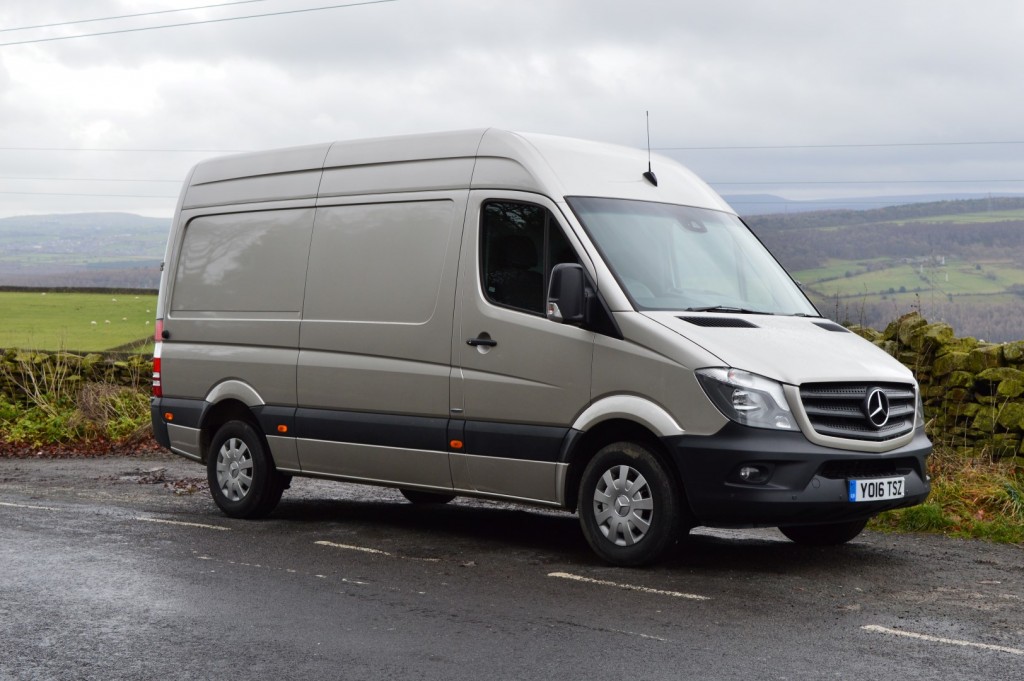
Background
The larger panel van sector has traditionally been utilitarian and functional in nature, with minimal emphasis from manufacturers on styling, comfort and features. These are factors generally considered to be more relevant to the retail, SME and artisan markets which would normally source smaller, 1 tonne panel vans or their even more compact siblings. More of a business tool, emotive factors generally have taken a back seat in preference to payload, volume and specific internal dimensions.
In recent years times have changed and whilst the lighter market has become more sophisticated and even ‘car like’ the heavier end is catching up rapidly with enhanced technology and safety features together with improved driver comfort and even brave visual styling to the exterior. This sector is dominated by 3.5t GVW variants of the Ford Transit, the Volkswagen Crafter and, the subject of this test, the Mercedes-Benz Sprinter.
Sprinter, first introduced in the UK in 2006 had its last facelift in 2013. Van versions are available in four wheelbases, three roof heights, four GVW’s and with four new Euro 6 Diesel engines of 112hp, 140hp, 163hp and 190hp outputs. A NGT (gas powered) unit is also on offer. The van provided for test was a 314 (140hp) medium wheelbase, high roof derivative with the optional 7G-TRONIC Plus 7 speed automatic transmission.
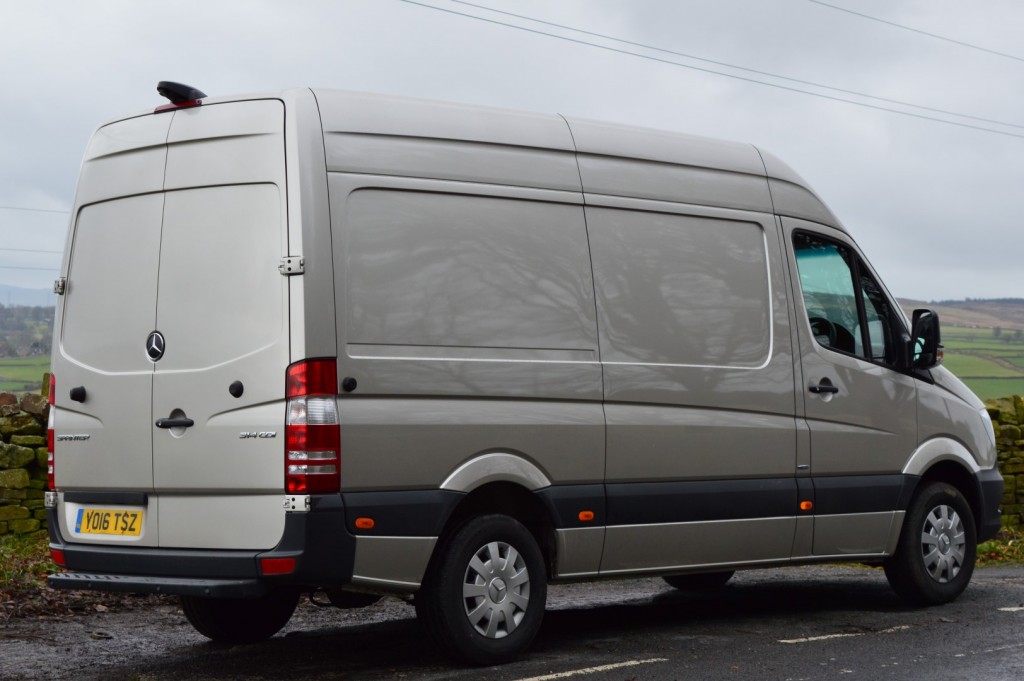
Specification and features
Duty of Care to employees is becoming an increasingly important factor for employers, no more so than in the specification and sourcing of working tools such as vans. This has been recognised by manufacturers who are showering their products with the very latest in safety technology which would, up until very recently only have been found on high specification passenger cars. Mercedes are pretty much at the front of the pack in this regard and every Sprinter sold in the UK has, as standard equipment, an Adaptive ESP package. This also encompasses acceleration skid control, electronic brake force distribution, brake assist, anti rollover systems, understeer control, cornering brake control, brake disc wipe and electronic brake prefill. Also standard on the majority of the van range is a crosswind assist feature, designed to minimise the effect of sudden gusts of wind to the side of the van. Optional safety equipment includes collision prevention assist, lane keeping assist and blind spot assist. This emphasis has, unsurprisingly led to the van repeatedly winning awards at industry events for its safety features.
The cab environment
Compared to smaller vans getting into and out of the Sprinter gracefully (and indeed any of its competitors) isn’t that easy. Having said that the Sprinter has a very handy grab handle situated to the left of the drivers seat which is a great aid to anyone who finds the task less than easy. This has an additional benefit of stopping passengers from overhanging the seat and obstructing the handbrake.
Getting comfortable in the drivers seat is easy with the usual range of adjustments, although we found the seat squab to be a little short. There is no steering column rake adjustment (this is a feature rarely found in commercial vehicles) and unless the seat is raised sufficiently some of the instrument panel can be partially obscured. Once seated, the driver is presented with an excellent view of the road and the large mirrors are more than adequate. The dash mounted gear lever enables easy cross cab access.
The dash layout is clear and functional and all controls are within easy reach of the driver. The centrally mounted media unit (including the optional satnav and reverse camera screens on the test van) is dated compared to those found in competitor vehicles and the fact that it is not ‘touch’ operated makes it much less easy to navigate (Mercedes-Benz state that a touch facility isn’t available due to the potential for driver distraction. We would argue the opposite, that fumbling around with buttons has more potential to divert the drivers attention).
From a storage perspective the Sprinter’s cab has plenty to offer. Although the door bins are not particularly large there is extensive capacity on the top of the dash together with really useful shelves above the sun visors.
The floor covering in the cab is an extremely practical slip resistant surface which appears to be very hard wearing and easy to clean.
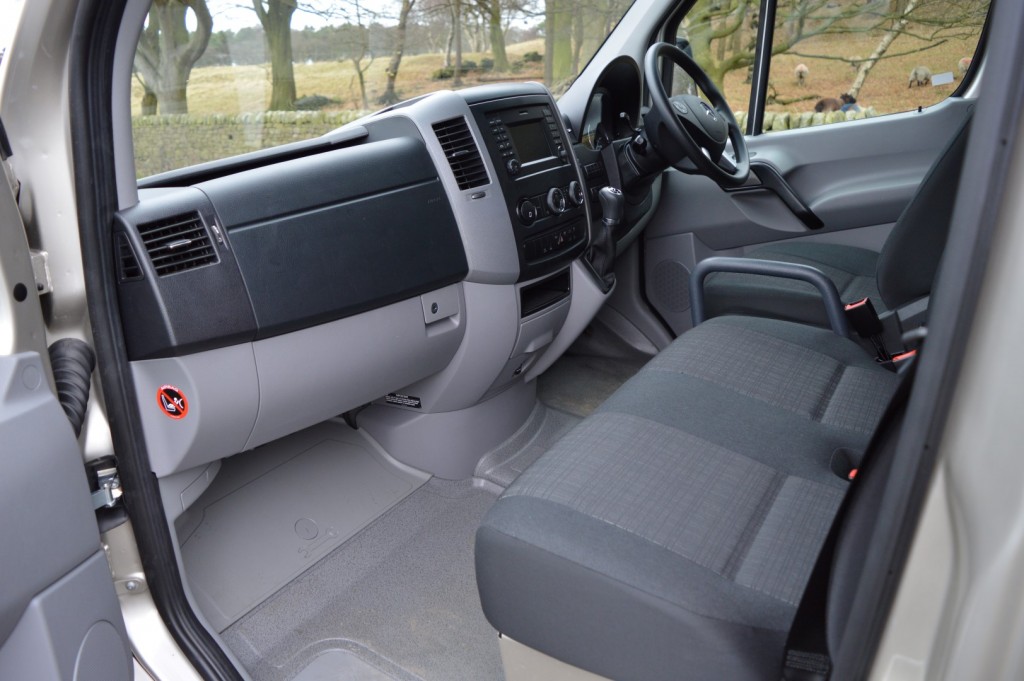
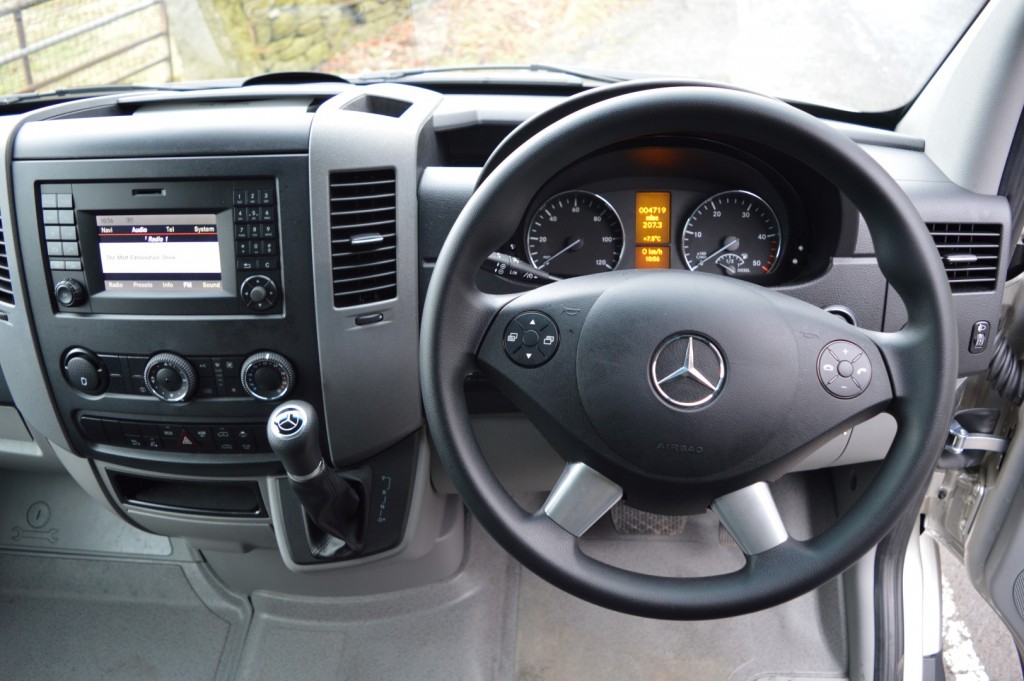
Loadspace
Mercedes-Benz have clearly given a great deal of thought to the practicalities of loading and unloading the Sprinter. A huge side loading door coupled with 270 degree opening full height rear doors (standard equipment) gives excellent access to the load area. A potential buyer may wish to consider the optional rear step, or even the electrically operated retractable side step, both of which were fitted to the test van. Once the load is in the van the modest wheelarch intrusion and straight sides offer maximum versatility. Eight load lashing eyes are fitted to the floor and a further two on the steel bulkhead, which has a useful storage facility on the top. Illumination is adequate with the three lights supplied.
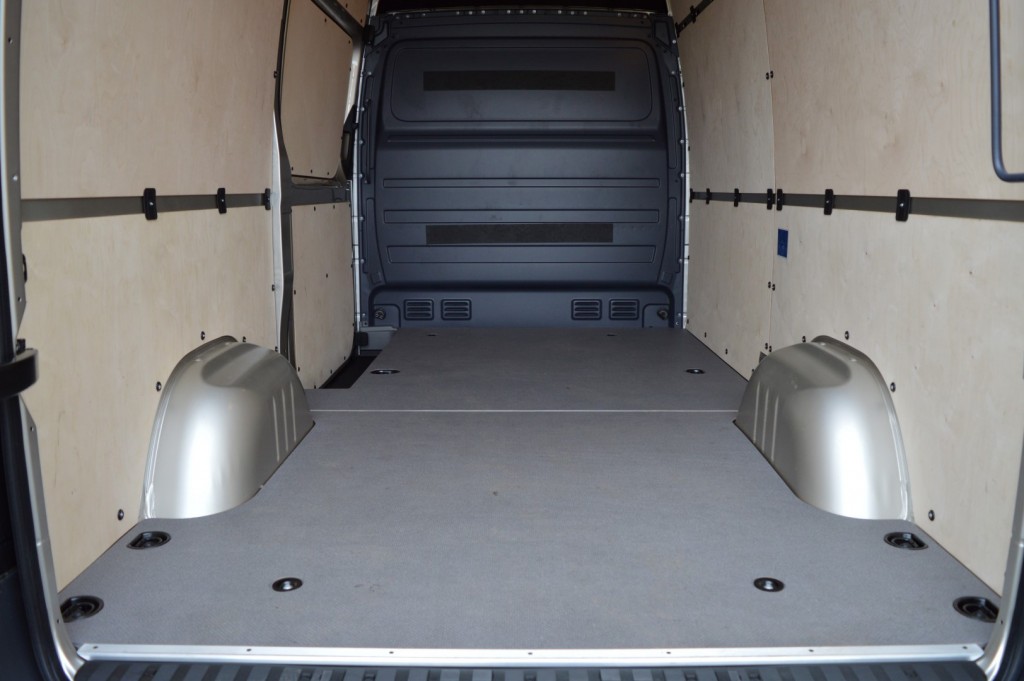
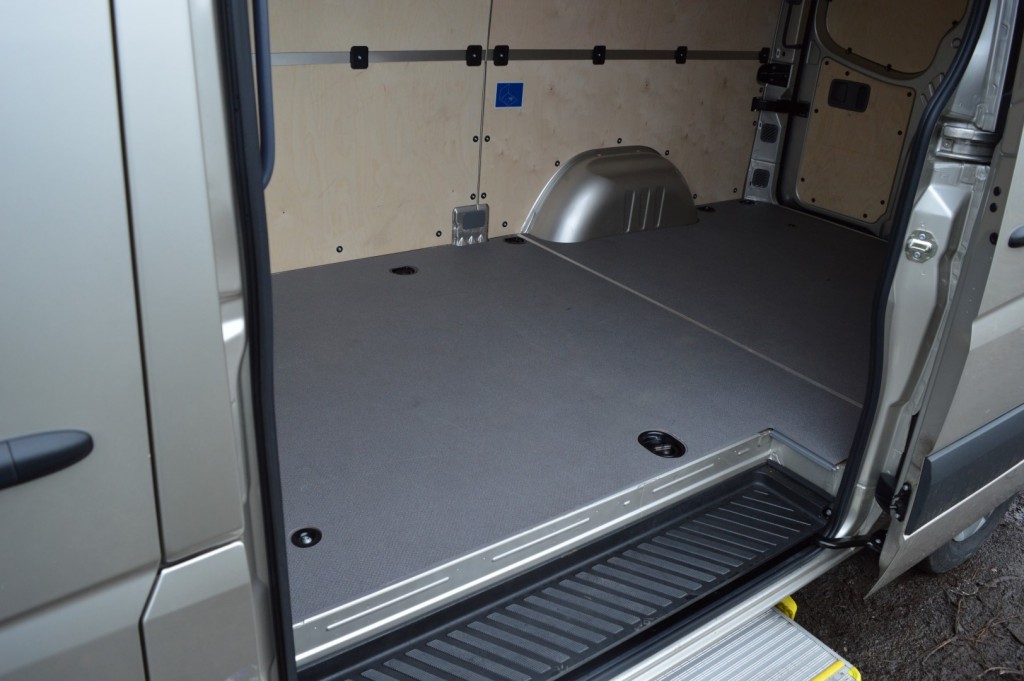
On the road
The introduction of Euro 6 engines in LCV’s has had a side benefit in most applications of smoother and quieter operation than its Euro 5 predecessors and the Sprinter is no exception. The 140hp unit fitted in the test van has an output that is becoming more and more the norm for a van of this size and weight and on the road (in an unladen state) it proved to be sprightly without feeling overpowered. Noise levels are not intrusive whatsoever and even when pushed hard it’s easy to continue a conversation with passengers. The 7G-TRONIC Plus auto box fitted to the test van worked well, however in our opinion still falls short of the seamless operation of the DSG box fitted to the Volkswagen Transporter and the Hi-Matic unit available on the latest generation of the Iveco Daily. Having said that, an auto box is rarely seen on 3.5t panel vans, the most common application being supermarket delivery vans based on chassis cab product. Overall, the van was a pleasure to drive and there was an overall feeling that build quality was excellent with noise, vibration and harshness being minimal. Driver and passenger comfort proved to be perfectly acceptable, even on a longer journey.
From a technical perspective the driver aids fitted to the test van soon become apparent in use. The blind spot warning triangle flashes from time to time in the door mirror and the lane departure warning makes itself known perhaps a little too often, sometimes when just moving out to pass a parked car or overtaking a cyclist. The reversing camera is mounted above the rear doors and gives a strange perspective on the screen which isn’t altogether clear. The parking sensors worked well however and the audible warning is coupled with an LED ‘countdown’ display in the drivers mirror.
Conclusion
Mercedes-Benz have continued to hone the Sprinter over the years and have successfully kept the van looking fresh and modern. Technologically the van is at least on a par with its closest competitor and in particular the standard safety equipment is second to none. The versatility of the range, the practical load carrying aspects, the good residual values and the back up from the dealer network make it a logical contender for any fleet manager reviewing the profile of his operation. The competition are hot on the heels though and in particular Mercedes-Benz will no doubt be looking over their shoulders when the all new Volkswagen Crafter (a platform previously, but no longer shared with MB) goes on sale very soon.
